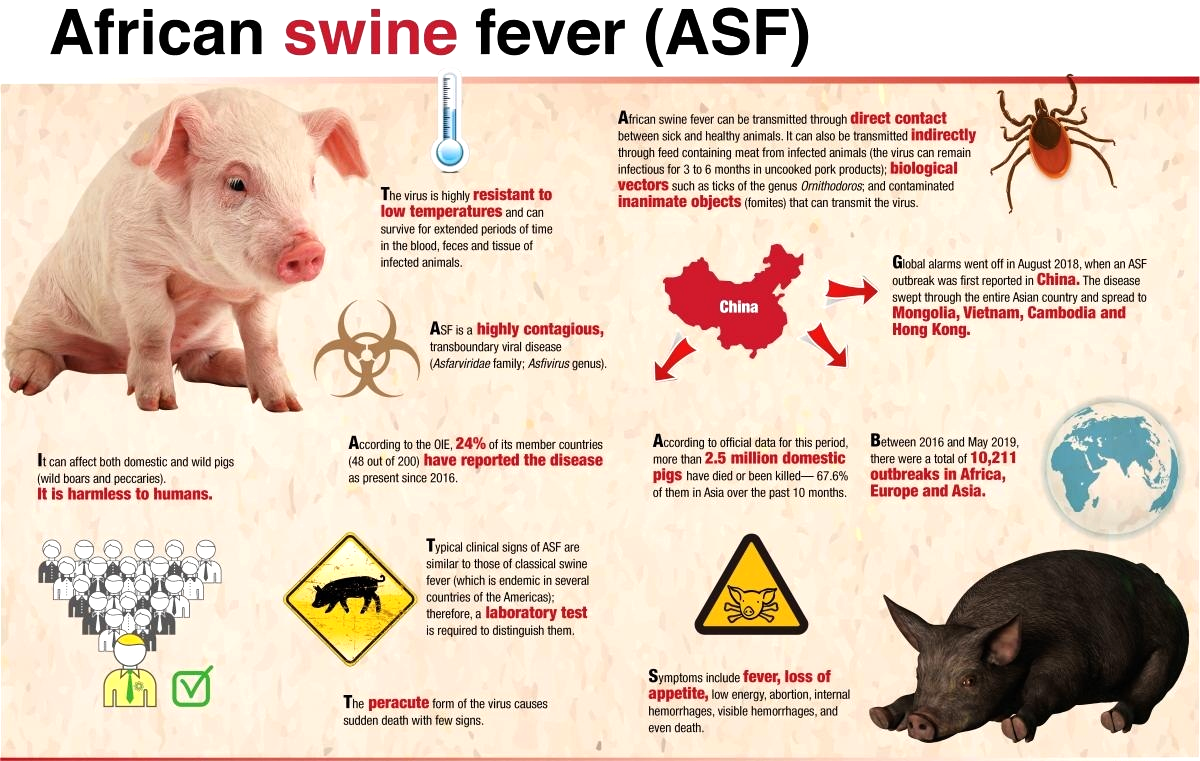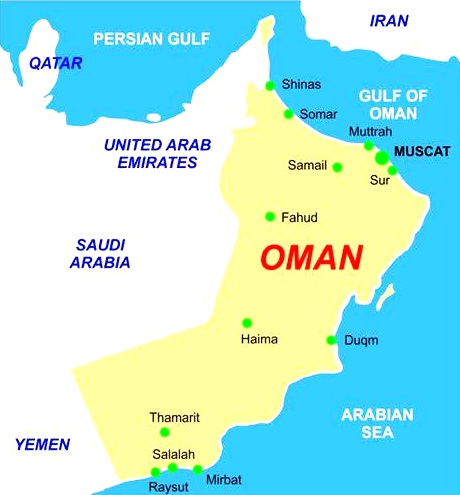Governance
Higher Education Commission of India
For Prelims: Higher Education Commission of India, National Education Policy, University Grants Commission
For Mains: Significance of National Education Policy, Functions & Challenges of HECI
Why in News?
Recently, the Government of India announced that they’re reworking a draft of the Bill (Draft Higher Education Commission of India (Repeal of University Grants Commission Act) Bill, 2018) that will bring to life the Higher Education Commission of India (HECI), for college and university-level education, cutting across disciplines.
- The new reworked draft will also be in tune with the National Education Policy of India.
What is the Draft Higher Education Commission of India Bill, 2018?
- About:
- The bill stands for “Draft Higher Education Commission of India (Repeal of University Grants Commission Act) Bill, 2018”.
- It was introduced in January, 2018.
- But it was never finalised, and within two years, the National Education Policy 2020 was announced.
- Key Points:
- The Bill repeals the University Grants Commission Act, 1956 and establishes the Higher Education Commission of India (HECI).
- The HECI will maintain academic standards in higher education by:
- Specifying learning outcomes for courses.
- Specifying eligibility criteria for Vice Chancellors.
- Ordering closure of higher educational institutions which fail to adhere to minimum standards.
- Every higher educational institution empowered to award degrees or diplomas will have to apply to the HECI to commence its first academic operations.
- The HECI also has the power to revoke permission on specified grounds.
- The Bill sets up an Advisory Council chaired by the Union Minister of Human Resource Development.
- The Council will advise on coordination and determination of standards in higher education between the centre and states.
- Coverage:
- The Bill will apply to ‘higher educational institutions’ which include:
- Universities set up by Acts of Parliament or state legislatures.
- Institutions deemed to be a university, and colleges.
- It excludes institutions of national importance.
- The Bill will apply to ‘higher educational institutions’ which include:
What were Major Challenges in 2018’s Bill?
- Autonomy:
- The Bill aims to promote autonomy of higher educational institutions.
- However, certain provisions of the Bill do not meet this stated objective.
- It may be argued that instead of granting higher educational institutions increased autonomy, the Bill provides HECI with extensive regulatory control.
- The Bill aims to promote autonomy of higher educational institutions.
- Regulatory Ambit:
- Currently, institutions offering professional courses are regulated by 14 professional councils.
- Of these, the Bill seeks to bring legal and architecture education within the purview of HECI.
- It is unclear why only these two areas are included within the regulatory ambit of the HECI and not the other fields of professional education.
- Currently, institutions offering professional courses are regulated by 14 professional councils.
- Disbursal of Grants:
- At present, the UGC has the power to allocate and disburse grants to universities and colleges.
- While the Bill replaces the UGC, it does not include any provisions regarding disbursal of grants.
- This raises a question whether HECI will have any role in the disbursal of grants to higher educational institutions.
- At present, the UGC has the power to allocate and disburse grants to universities and colleges.
- Independent Regulations:
- Presently, the Central Advisory Board of Higher Education (CABE) co-ordinates and advises the centre and states on education related matters.
- The Bill creates an Advisory Council and requires HECI to implement its recommendations.
- This may restrict HECI from functioning as an independent regulator.
What are the Functions of HECI?
- The HECI will recommend ways to promote autonomy of higher educational institutions and ensure maintenance of academic standards in higher education.
- It will specify norms for:
- Learning outcomes for courses.
- Standards of teaching and research.
- Evaluation procedure to measure yearly academic performance of institutions.
- Accreditation of institutions.
- Ordering closure of institutions.
- Further, the HECI may specify norms for:
- Granting authorisation to institutions to commence academic operations.
- Award of degree or diploma.
- Affiliation of institutions with universities.
- Grant of autonomy.
- Graded autonomy.
- Eligibility criteria for appointment of Vice Chancellors.
- Setting & winding up of institutions.
- Fee regulation.
What is the Significance of National Education Policy, 2020?
- Recognising Importance of Formative years:
- In adopting a 5+3+3+4 model for school education starting at age 3, the policy recognises the primacy of the formative years from ages 3 to 8 in shaping the child’s future.
- Departure from Silos Mentality:
- Another key aspect of school education in the new policy is the breaking of the strict division of arts, commerce and science streams in high school.
- The Confluence of Education and Skills:
- Introduction of vocational courses with an internship.
- This may nudge the vulnerable sections of society to send their children to school.
- Introduction of vocational courses with an internship.
- Making Education More Inclusive:
- The NEP proposes the extension of the Right to Education (RTE) to all children up to the age of 18.
- Allowing Foreign Universities:
- The document states universities from among the top 100 in the world will be able to set up campuses in India.
- Ending Hindi vs English Debate:
- It emphasizes on making mother tongue, local language or the regional language the medium of instruction at least till Grade 5, which is considered the best medium of teaching.
UPSC Civil Services Examination, Previous Year Questions (PYQs)
Q. National Education Policy 2020 is in conformity with the Sustainable Development Goal-4 (2030). It intends to restructure and reorient education system in India. Critically examine the statement. (2020)

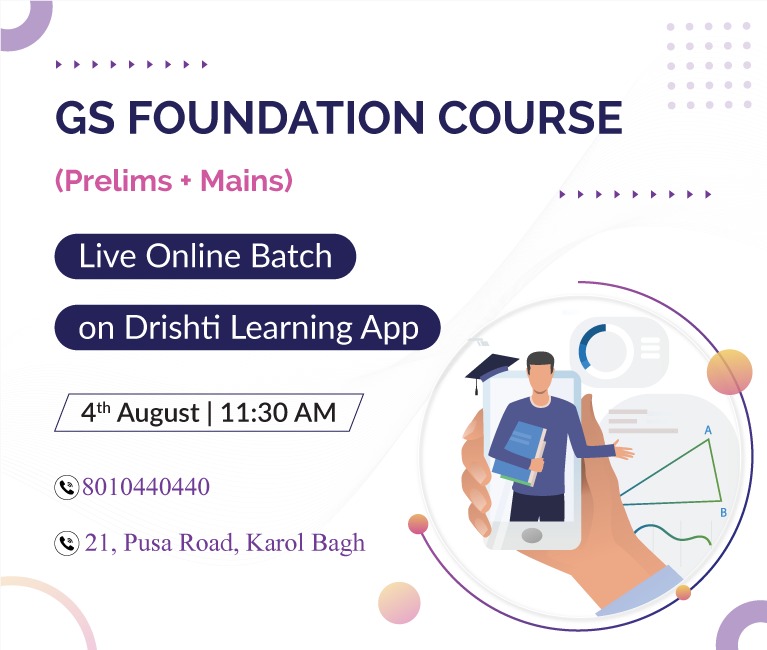
Governance
Tobacco Endgame
For Prelims: Tobacco, WHO, WHO FCTC, Denicotisation, NFHS-5
For Mains: Tobacco - its impact and eradication measures
Why in News?
To fulfil its plan to be smokefree by 2025, the New Zealand Parliament recently tabled the Smokefree Environments and Regulated Products (Smoked Tobacco) Amendment Bill.
- Emulating New Zealand, Malaysia is also considering a ban on smoking and the sale of all tobacco products, including e-cigarettes, to people born after 2007.
What is the New Zealand's Bill on Tobacco Endgame?
- About:
- The Tobacco Endgame refers to a policy approach that focuses on ending the Tobacco Epidemic, aiming at a ‘tobacco-free future’.
- The Bill seeks three Strategies to reduce Smoking significantly or ending it.
- If implemented, it will be the world-first legislation that will stop the next generation from ever being able to legally buy cigarettes.
- Strategies Proposed:
- Drastically reducing nicotine content in tobacco so it is no longer addictive (known as “denicotinisation” or “very low nicotine cigarettes” (VLNC)).
- A 90% to 95% reduction in the number of shops that can sell tobacco.
- Making it illegal to sell tobacco to people born on or after 1 January 2009. (thus, creating a “smoke free generation”).
What is the Status of Tobacco Consumption?
- Globally:
- The tobacco epidemic is one of the biggest public health threats the world has ever faced, killing more than 8 million people a year (as per the World Health Organisation), including around 1.2 million deaths from exposure to second-hand smoke.
- Nearly one in four people across the globe use tobacco.
- All forms of tobacco are harmful, and there is no safe level of exposure to tobacco.
- Cigarette smoking is the most common form of tobacco use worldwide.
- Other tobacco products include waterpipe tobacco, various smokeless tobacco products, cigars, cigarillos, roll-your-own tobacco, pipe tobacco, bidis and kreteks.
- Tobacco use is a major risk factor for many chronic diseases, including cancer, lung disease, cardiovascular disease and stroke.
- The tobacco epidemic is one of the biggest public health threats the world has ever faced, killing more than 8 million people a year (as per the World Health Organisation), including around 1.2 million deaths from exposure to second-hand smoke.
- Status in India:
- 38% men and 9% women above 15 years of age use tobacco products, as per the National Family Health Survey 5 (2019-21).
- Women (19%) and men (51%) belonging to Scheduled Tribes are more likely to use tobacco than those from any other caste/tribe groups.
- Among men as well as women, the use of tobacco is higher in rural areas (43% for men and 11 % for women) than in urban areas.
- Nearly three-fifths of men and 15% of women with no schooling or less than 5 years of schooling use tobacco.
- Socio-Economic Burden of Tobacco Consumption:
- Tobacco use contributes to poverty by diverting household spending from basic needs such as food and shelter to tobacco.
- The economic costs of tobacco use are substantial and include significant health care costs for treating the diseases caused by tobacco use as well as the lost human capital that results from tobacco-attributable morbidity and mortality.
- It is one of the major causes of death and disease in India and accounts for nearly 1.35 million deaths every year.
- India is also the second largest consumer and producer of tobacco. A variety of tobacco products are available at very low prices in the country.
- The total economic costs attributed to tobacco use (from all diseases in India in the year 2017-18 for persons aged 35 years and above) amounted to INR 177 341 crore.
What Measures have been Taken to Tackle High Tobacco Consumption?
- Global Initiatives:
- WHO Framework Convention on Tobacco Control (WHO FCTC):
- It was developed in response to the globalisation of the tobacco epidemic and is an evidence-based treaty that reaffirms the right of all people to the highest standard of health.
- India has adopted the tobacco control provisions under the WHO FCTC.
- World No Tobacco Day:
- 31st May is observed as ‘World No Tobacco Day’ every year to spread awareness around the deadly effects of tobacco consumption.
- WHO Framework Convention on Tobacco Control (WHO FCTC):
- India’s Initiatives:
- Cigarettes and Other Tobacco Products Act (COTPA), 2003:
- It replaced the Cigarettes Act of 1975 (largely limited to statutory warnings- ‘Cigarette Smoking is Injurious to Health’ to be displayed on cigarette packs and advertisements. It did not include non-cigarettes).
- The 2003 Act also included cigars, bidis, cheroots, pipe tobacco, hookah, chewing tobacco, pan masala, and gutka.
- Promulgation of the Prohibition of Electronic Cigarettes Ordinance, 2019:
- It prohibits Production, Manufacture, Import, Export, Transport, Sale, Distribution, Storage and Advertisement of e-Cigarettes.
- National Tobacco Quitline Services (NTQLS):
- Tobacco Quitline Services have the potential to reach a large number of tobacco users with the sole objective to provide telephone-based information, advice, support, and referrals for tobacco cessation.
- mCessation Programme:
- It is an initiative using mobile technology for tobacco cessation.
- India launched mCessation using text messages in 2016 as part of the government’s Digital India initiative.
- Cigarettes and Other Tobacco Products Act (COTPA), 2003:


Geography
Aridity Anomaly Outlook Index: IMD
For Prelims: IMD, Drought, Kharif Season
For Mains: Aridity Anomaly Outlook Index and its Significance
Why in News?
Recently, Indian Meteorological Department (IMD) has released the Aridity Anomaly Outlook (AAO) Index of July 2022, which says at least 85% of districts face arid conditions across India.
What is the Aridity Anomaly Outlook Index?
- About:
- The index monitors agricultural drought, a situation when rainfall and soil moisture are inadequate to support healthy crop growth till maturity, causing crop stress.
- An anomaly from the normal value signifies a water shortage in these districts that could directly impact agricultural activity.
- It is Developed by the India Meteorological Department (IMD).
- Characteristics:
- A real-time drought index in which water balance is considered.
- The Aridity Index (AI) is computed for weekly or two-week periods.
- For each period, the actual aridity for the period is compared to the normal aridity for that period.
- Negative values indicate a surplus of moisture while positive values indicate moisture stress.
- Parameters:
- Actual evapotranspiration and calculated potential evapotranspiration, which require temperature, wind and solar radiation values.
- Actual evapotranspiration is the quantity of water that is actually removed from a surface due to the processes of evaporation and transpiration.
- Potential evapotranspiration is the maximum attainable or achievable evapotranspiration for a given crop due to evaporation and transpiration.
- Actual evapotranspiration and calculated potential evapotranspiration, which require temperature, wind and solar radiation values.
- Applications:
- Impacts of drought in agriculture, especially in the tropics where defined wet and dry seasons are part of the climate regime.
- Both winter and summer cropping seasons can be assessed using this method.
What are the Findings?
- Only 63 of 756 districts are non-arid, while 660 are facing different degrees of aridity — mild, moderate and severe.
- Some 196 districts are in the grip of a ‘severe’ degree of dryness and 65 of these are in Uttar Pradesh (highest).
- Bihar had the second highest number of districts (33) experiencing arid conditions. The state also has a high rainfall deficit of 45%.
- Other districts facing ‘severe arid’ conditions are Jharkhand, Haryana, Madhya Pradesh, Delhi, Telangana, Maharashtra, Andhra Pradesh, Jammu and Kashmir, Punjab, West Bengal, Rajasthan, Karnataka and Tamil Nadu.
- The SPI on the DEWS platform also highlights a persisting rainfall deficit in these areas in the last six months.
- Arid conditions have impacted the ongoing kharif sowing, as the area sown under different kharif crops as of July, 2022, was less by 13.26 million hectares compared to the corresponding period in 2021.
What is the Standardised Precipitation Index (SPI)?
- The SPI is a widely used index to characterize meteorological drought on a range of timescales.
- On short timescales, the SPI is closely related to soil moisture, while at longer timescales, the SPI can be related to groundwater and reservoir storage.
- The SPI on the Drought Early Warning System (DEWS), a real-time drought monitoring platform managed by the Indian Institute of Technology, Gandhinagar (IIT-G) platform highlights a persisting rainfall deficit in these areas in the last six months.
- UP, Jharkhand, Bihar, West Bengal and some parts of the North East are under extreme drought situation and agriculture of these regions might be affected.
What is the India Meteorological Department (IMD)?
- IMD was established in 1875.
- It is an agency of the Ministry of Earth Sciences.
- It is the principal agency responsible for meteorological observations, weather forecasting and seismology.
UPSC Civil Services Examination Previous Year Question (PYQ)
Prelims
Q. Consider the following pairs: (2014)
Programme/Project Ministry
- Drought-Prone: Ministry of Area Programme Agriculture
- Desert Development: Ministry of Programme Environment and Forests
- National Watershed: Ministry of Rural Development Project Development for Rainfed Areas
Which of the above pairs is/are correctly matched?
(a) 1 and 2 only
(b) 3 only
(c) 1, 2 and 3
(d) None
Ans: (d)
- The aim of Drought-Prone Area Programme is to minimise the adverse effects of drought on production of crops and livestock and productivity of land, water and human resources, ultimately leading to drought proofing of the affected areas. It comes under the Department of Land Resources, Ministry of Rural Development. Hence, pair 1 is not correctly matched.
- The objective of the Desert Development Programme is to minimise the adverse effect of drought and control desertification through rejuvenation of the natural resource base of the identified desert areas. It comes under the Department of Land Resources, Ministry of Rural Development. Hence, pair 2 is not correctly matched.
- National Watershed Development Programme for Rain fed Areas (NWDPRA) is a programme for the conservation, development and sustainable management of natural resources and enhancement of agricultural productivity and production in a sustainable manner. It comes under Department of Agricultural Cooperation and Farmer Welfare (Ministry of Agriculture and Farmers’ Welfare). Hence, pair 3 is not correctly matched.
- Therefore, option (d) is the correct answer.
Mains
Q. In what way micro-watershed development projects help in water conservation in drought-prone and semi-arid regions of India? (2016)
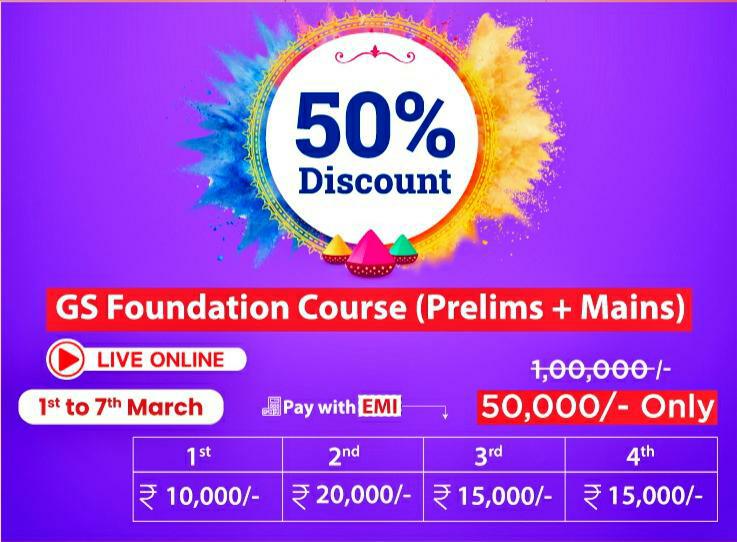
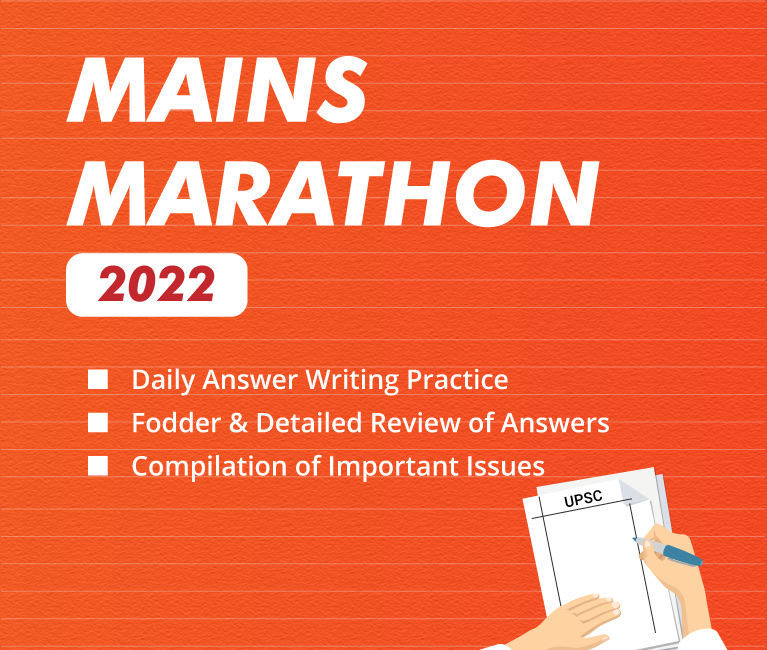
Governance
Hate Speech and Blasphemy
For Prelims: Law Commission of India, Hate Speech, Indian Penal Code (IPC), National Crime Records Bureau (NCRB)
For Mains: Blasphemy, Hate Speech, and their Regulation
Why in News?
Recently, there has been a rise in cases related to Hate Speech, Blasphemy in India.
What is Hate Speech?
- About:
- According to the 267th Report of the Law Commission of India, Hate Speech is stated as an incitement to hatred primarily against a group of persons defined in terms of race, ethnicity, gender, sexual orientation, religious belief, and the like.
- Thus, hate speech is any word written or spoken, signs, visible representations within the hearing or sight of a person with the intention to cause fear or alarm, or incitement to violence.
- According to the 267th Report of the Law Commission of India, Hate Speech is stated as an incitement to hatred primarily against a group of persons defined in terms of race, ethnicity, gender, sexual orientation, religious belief, and the like.
- Related Data:
- According to the National Crime Records Bureau (NCRB), there has been a huge increase in cases registered to promote hate speech and foster animosity in society.
- As there were only 323 cases registered in 2014, it had increased to 1,804 cases in 2020.
- According to the National Crime Records Bureau (NCRB), there has been a huge increase in cases registered to promote hate speech and foster animosity in society.
What are the Regulations Related to Blasphemy?
- About:
- Section 295(A) of the Indian Penal Code (IPC), punishes any speech, writings, or signs that “with premeditated and malicious intent” insult citizens’ religion or religious beliefs with a fine and imprisonment for up to three years.
- SC Interpretation:
- Ramji Lal Modi case (1957):
- The legality of Section 295(A) was affirmed by a five-judge Bench of the Supreme Court in this case.
- Supreme court reasoned that while Article 19(2) allows reasonable limits on freedom of speech and expression for the sake of public order.
- The punishment under Section 295(A) deals with aggravated form of blasphemy which is committed with the malicious aim of offending the religious sensibilities of any class.
- Supreme court reasoned that while Article 19(2) allows reasonable limits on freedom of speech and expression for the sake of public order.
- The legality of Section 295(A) was affirmed by a five-judge Bench of the Supreme Court in this case.
- Superintendent, Central Prison, Fatehgarh Vs Ram Manohar Lohia case (1960):
- It stated that the link between the speech spoken and any public disorder caused as a result of it should have a close relationship for retrieving Section 295(A) of IPC.
- Further in 2011, it concluded that only speech that amounts to "incitement to impending unlawful action" can be punished.
- That is, the state must meet a very high bar before using public disturbance as a justification for suppressing expression.
- Ramji Lal Modi case (1957):
Why there is a Need for Distinction between Blasphemy and Hate Speech Laws?
- Too wide Interpretation:
- Section 295(A) is considerably too wide and it cannot be stated that deliberate disrespect to religion or religious sensibilities is necessarily tantamount to incitement.
- Section 295(A) contains hate speech statutes:
- The Supreme Court has said on several occasions that perhaps the goal of hate speech statutes in Section 295(A) is to prevent prejudice and ensure equality.
- Laws Lack Clarity:
- Hate speech laws are predicated on the critical distinction between criticizing or ridiculing religion and encouraging prejudice or aggression towards individuals or a community because of their faith.
- Unfortunately, there is a huge disparity between this interpretation and the actual wording due to which the law is still being exploited at all levels of administration.
- Hate speech laws are predicated on the critical distinction between criticizing or ridiculing religion and encouraging prejudice or aggression towards individuals or a community because of their faith.
Way Forward
- Blasphemy, which generally prohibits criticism of religion, is incompatible with the principles of democratic societies.
- In a free and democratic society, there should be no scrutiny of discourse or objections.
- Following the subtle line between the protection of faith and hate speech, the only viable solution is to keep blasphemy in law and make it non-criminal.


Biodiversity & Environment
African Swine Fever in India
For Prelims: African Swine Fever, Classical Swine Fever, ICAR, IVRI, WOAH, Vaccination
For Mains: Effects of Swine Fever on Economics of Animal Rearing, Role of World Organisation for Animal Health
Why in News?
Recently, African Swine Fever has been confirmed for the first time, at a private pig farm in in Kerala, after more than 15 pigs on the farm had died due to the disease in the last ten days.
What is African Swine Fever?
- About:
- It is a highly contagious and fatal animal disease that infects and leads to an acute form of hemorrhagic fever in domestic and wild pigs.
- Other manifestations of the disease include:
- High fever
- Depression
- Anorexia
- Loss of appetite
- Hemorrhages in the skin
- Vomiting and diarrhoea among others.
- It was first detected in Africa in the 1920s.
- Historically, outbreaks have been reported in Africa and parts of Europe, South America, and the Caribbean.
- However, since 2007, the disease has been reported in multiple countries across Africa, Asia and Europe, in both domestic and wild pigs.
- Historically, outbreaks have been reported in Africa and parts of Europe, South America, and the Caribbean.
- The mortality is close to 95% - 100% and since the fever has no cure, the only way to stop its spread is by culling the animals.
- ASF is not a threat to human beings since it only spreads from animals to other animals.
- ASF is a disease listed in the World Organisation for Animal Health (OIE)’s Terrestrial Animal Health Code.
- Clinical Signs:
- The clinical signs of ASF may occur in chronic, sub-acute or acute form.
- In the acute form pigs develop a high temperature (40.5 degrees C or 105 degrees F), then become dull and go off their food.
- Other symptoms can vary but will include some or all of the following:
- Vomiting
- Diarrhoea (sometimes bloody)
- Reddening or darkening of the skin, particularly ears and snout
- Gummed up eyes
- Laboured breathing and coughing
- Abortion, still births and weak litters
- Weakness and unwillingness to stand
- The clinical signs of ASF may occur in chronic, sub-acute or acute form.
- Transmission:
- Direct contact with infected pigs, faeces or body fluids.
- Indirect contact via fomites such as equipment, vehicles or people who work with pigs between pig farms with ineffective biosecurity.
- Pigs eating infected pig meat or meat products.
- Biological vectors - ticks of the species Ornithodoros.
What is Classical Swine Fever?
- CSF, also known as Hog Cholera, is an important disease of pigs.
- It is one of the most economically-damaging pandemic viral diseases of pigs in the world.
- It is caused by a virus of the genus Pestivirus of the family Flaviviridae, which is closely related to the viruses that cause bovine viral diarrhoea in cattle and border disease in sheep.
- Mortality rate of Classical Swine Fever is 100%.
- Recently, the Indian Council of Agricultural Research ICAR-Indian Veterinary Research Institute IVRI developed a Cell Culture CSF Vaccine (live attenuated) using the Lapinized Vaccine Virus from foreign strain.
- The new vaccine has been found to induce protective immunity from day 14 of the Vaccination till 18 Months.
What is the World Organisation for Animal Health?
- WOAH was formerly called the “Office International des Epizooties”.
- OIE is an intergovernmental organisation responsible for improving animal health worldwide.
- It has 182 Member Countries.
- India is one of the member countries.
- OIE develops normative documents relating to rules that Member Countries can use to protect themselves from the introduction of diseases and pathogens.
- One of them is the Terrestrial Animal Health Code.
- OIE standards are recognised by the World Trade Organization as reference international sanitary rules.
- It is headquartered in Paris, France.
UPSC Civil Services Examination, Previous Year Questions (PYQs)
Q. H1N1 virus is sometimes mentioned in the news with reference to which one of the following diseases? (2015)
(a) AIDS
(b) Bird flu
(c) Dengue
(d) Swine flu
Ans: (d)
Explanation:
- H1N1 virus is related to Swine Flu.
- The World Health Organization declared the flu caused by H1N1 to be a global pandemic in 2009.
- Symptoms of Swine Flu include fever, cough, sore throat, chills, weakness and body aches.
- The swine influenza genome has 8 different regions which are segmented and encode 11 different proteins:
- Envelope proteins Hemagglutinin (HA) and Neuraminidase (NA).
- Viral RNA polymerases which include PB2, PB1, PB1-F2, PA, and PB.
- Matrix proteins M1 and M2.
- Nonstructural proteins NS1 and NS2, which are crucial for efficient pathogenesis and viral replication.
- Therefore, option (d) is the correct answer.


Science & Technology
Increasing Efficacy of Gene Therapy
For Prelims: Gene Therapy, DNA, Alpha-1 Antitrypsin, Proteostasis
For Mains: Increasing Efficacy of Gene Therapy and its implications
Why in News?
Recently, a study titled “Secretion of functional α1-antitrypsin is cell type dependent” has been published, which shows that the Efficacy of Gene Therapy can be increased by changing protein regulation networks in the body, helping treat genetic diseases.
What is Gene Therapy?
- Gene therapy is a way to treat genetic diseases by correcting the source of the error in a patient’s DNA (Deoxy-ribo Nucleic Acid).
- Gene therapy techniques allow doctors to treat a disorder by altering a person’s genetic makeup instead of using drugs or surgery.
- A harmless viral or bacterial vector is used to carry a corrective gene into a patient’s cells, where the gene then directs the cell to produce the proteins necessary to treat the disease.
- Muscle cells are a common target because gene therapies injected into the muscle are more accessible than introduction into the body by other routes.
- But muscle cells may not produce the desired protein as efficiently as needed if the job the gene instructs it to do is very different from the one it specialises in.
What are the Findings?
- Effectiveness of Gene Therapy:
- Developed a strategy to use a harmless version of an adeno-associated virus as a vehicle to deliver AAT (Alpha-1 Antitrypsin) gene therapies into the body via injection, allowing for sustained release of the protein over several years.
- AAT is a condition in which liver cells are unable to make adequate amounts of the protein AAT.
- It results in a breakdown of lung tissue that can cause serious respiratory problems, including the development of severe lung diseases such as chronic obstructive pulmonary disease (COPD) or emphysema.
- Adding a molecule called suberoylanilide hydroxamic acid, or SAHA, helps muscle cells make AAT at a production level more like that of liver cells.
- Proteostasis is the process that regulates proteins within the cell in order to maintain the health of both the cellular proteome and the organism itself.
- Proteostasis involves a highly complex interconnection of pathways that influence the fate of a protein from synthesis to degradation.
- Adding SAHA or similar proteostasis regulators to gene therapies can help increase the effectiveness of these treatments for many genetic diseases.
- Patients are usually treated by receiving AAT via infusion. It requires patients to either make regular trips to the hospital or keep expensive equipment at home for the rest of their lives.
- Replacing the faulty gene that causes AAT shortage in the first place can be a boon for patients.
- Current gene therapies inject the AAT-producing gene into muscle.
- Developed a strategy to use a harmless version of an adeno-associated virus as a vehicle to deliver AAT (Alpha-1 Antitrypsin) gene therapies into the body via injection, allowing for sustained release of the protein over several years.
- Implications:
- Increasing the protein production of muscle cells can potentially improve vaccine immunity.
- Adding a protein homeostasis enhancer to the cell could optimize protein yield and increase the effectiveness of the drug.
- Many drugs are derived from natural sources that rely heavily on a given cell’s protein production capabilities.
- But many of these drugs use cells that aren’t specialized to make large amounts of protein.
- Ways to improve the cellular machinery behind protein homeostasis can help delay aging and open many new doors for treating a wide range of diseases.


Important Facts For Prelims
AlphaFold & Protein
Why in News?
Recently, DeepMind, a company based in London, announced that it had predicted the three-dimensional structures of more than 200 million proteins using AlphaFold.
What do we need to know about AlphaFold?
- About:
- AlphaFold is an Artificial Intelligence-based protein structure prediction tool.
- It is based on a computer system called Deep Neural Network.
- Neural networks use a large amount of input data and provide the desired output exactly like how a human brain would.
- The real work is done by the black box between the input and the output layers, called the Hidden Networks.
- AlphaFold is fed with protein sequences as input.
- When protein sequences enter through one end, the predicted three-dimensional structures come out through the other.
- Mechanism:
- The first step uses the available structures of 1,70,000 proteins in the Protein Data Bank (PDB) to train the computer model.
- Then, it uses the results of that training to learn the structural predictions of proteins not in the PDB.
- Then, it uses the high-accuracy predictions from the first step to retrain and relearn to gain higher accuracy of the earlier predictions.
- By using this method, AlphaFold has now predicted the structures of the entire 214 million unique protein sequences deposited in the Universal Protein Resource (UniProt) database.
- The first step uses the available structures of 1,70,000 proteins in the Protein Data Bank (PDB) to train the computer model.
- Implication:
- Knowing protein structure and function is essential to understand human diseases.
- Proteins are generally structured using x-ray crystallography, nuclear magnetic resonance spectroscopy, or cryogenic electron microscopy.
- These techniques are not just time-consuming, they often take years and are based mainly on trial-and-error methods.
- AlphaFold makes the process of protein structuring easier.
- It is a watershed movement in science and structural biology in particular.
- AlphaFold has already helped hundreds of scientists accelerate their discoveries in vaccine and drug development since the first public release of the database nearly a year back.
- Available Substitutes:
- AlphaFold is neither flawless nor the only AI-based protein structure prediction tool.
- RoseTTaFold, developed by University of Washington in Seattle, U.S., is another tool.
- Although less accurate than AlphaFold, it can predict the structure of protein complexes.
- RoseTTaFold, developed by University of Washington in Seattle, U.S., is another tool.
- AlphaFold is neither flawless nor the only AI-based protein structure prediction tool.
How should India Benefit from it?
- India needs to quickly take advantage of the AlphaFold database and learn how to use the structures to design better vaccines and drugs.
- Understanding the accurate structures of Covid-19 virus proteins in days rather than years will accelerate vaccine and drug development against the virus.
- India should also speed up implementation of public-private partnerships in the sciences.
- It should facilitate joint collaborations with the prevalent hardware muscle and data science talent in the private sector and specialists in academic institutions to pave the way for data science innovations.
UPSC Civil Services Examination, Previous Year Questions (PYQs)
Q. What is the Cas9 protein that is often mentioned in the news? (2019)
(a) A molecular scissors used in targeted gene editing
(b) A biosensor used in the accurate detection of pathogens in patients
(c) A gene that makes plants pest-resistant
(d) A herbicidal substance synthesized in genetically modified crops
Ans: (a)
Explanation:
- CRISPR-Cas9 is a unique technology that enables geneticists and medical researchers to edit parts of the genome by removing, adding or altering sections of the DNA sequence.
- CRISPR is an acronym for “Clustered Regularly Interspaced Short Palindromic Repeats.”
- Cas9 is basically an enzyme that is used like a pair of scissors to cut two strands of DNA at a specific location to add, remove or repair bits of DNA.
- Therefore, option (a) is the correct answer.


Important Facts For Prelims
Exercise Al NAJAH
Why in News?
Indian Army and Royal Army of Oman will conduct their joint Military Exercise AL NAJAH-IV from 1st to 13th of August 2022.
What do we Know about Exercise Al NAJAH?
- About:
- It's the fourth edition of the exercise.
- The scope of the exercise includes professional interaction, mutual understanding of drills & procedures, establishment of joint command & control structures and elimination of terrorist threats.
- The joint exercise would focus on Counter Terrorism Operations, Regional Security Operations, and Peace Keeping Operations under United Nations charter apart from organising joint physical training schedules, tactical drills, techniques and procedures.
- Other exercises with Oman:
- Navy exercise:
- Naseem-Al-Bahr
- Air Force:
- Eastern Bridge
- Navy exercise:
What is the Strategic Significance of Oman for India?
- Oman is a strategic partner of India in the Gulf and an important interlocutor at the Gulf Cooperation Council (AGCC), Arab League and Indian Ocean Rim Association (IORA) fora.
- Oman is at the gateway of Strait of Hormuz through which India imports one-fifth of its oil imports.
- The two countries across the Arabian Sea are linked by geography, history and culture and enjoy warm and cordial relations, which are attributed to historical maritime trade linkages.


Internal Security
MiG-21 Crash
For Prelims: Indian Airforce, IAF Modernization Drive, Flying Coffin
For Mains: MiG-21 Aircrafts, Aircraft Crashes
Why in News?
- Recently, a MiG-21 Bison aircraft of the Indian Air Force (IAF) crashed in Barmer, Rajasthan killing the two pilots aboard the trainer version of the fighter aircraft.
- Currently, the IAF has around 70 Mig-21 aircraft and 50 Mig-29 variants.
- There are four squadrons of MiG-21 Bison aircraft currently in service in the IAF with each squadron comprising 16-18 aircraft, including two trainer versions.
What drives the Phase out of Aircrafts?
- The Indian Air Force (IAF) plans to phase out the four MiG-21 fighter squadrons with one of them set to retire from service in September 2022.
- The IAF also plans to start the phasing out of the three squadrons of MiG-29 fighter jets in the next five years.
- It is part of the IAF's modernization drive.
- The plan is to retire all four MiG-21 squadrons by 2025.
What is MiG-21?
- The Mikoyan-Gurevich MiG 21 is a supersonic jet fighter and interceptor aircraft, designed by the Mikoyan-Gurevich Design Bureau in the Soviet Union.
- MiG is a product of the Soviet Union which entered into service in 1959.
- Approximately 60 countries on four continents have flown the MiG-21, and it still serves many nations six decades after its maiden flight.
- India inducted the MiG-21 in 1963 and got full technology transfer and rights to license-build the aircraft in the country.
- Russia stopped producing the aircraft in 1985, while India continued operating the upgraded variants.
Why so many MiG-21 crashes in India?
- Over the last ten years, 108 air accidents and losses have taken place involving all arms of the military – IAF, Navy, Army, and Coast Guard.
- Out of these, 21 crashes have involved the Mig-21 Bison and its variants, though the IAF flies mostly the former now.
- The high rate of accidents earned the aircraft the nickname of ‘Flying Coffin”.
- There is no single, common reason for military aircraft crashes. They can range from weather, human error, technical error to bird hits.
- The MiG-21 is a single engine fighter, and that could also be a cause for some of the crashes.
- It is a single engine fighter and when it loses that engine, it needs to be re-started. More often than not it re-lights but it takes a finite amount of time to re-light any engine, so if you are below the minimum height, you have to leave the aircraft.
Way Forward
- Preventing future aircraft accidents lies in the usage of a combination of technology and appropriate and adequate pilot training.
- The installation of Ground Proximity Warning System in the aircraft will generate early signals that can alert the flight crew to take preventive measures against the onset of CFIT.
- Effective training of pilots to develop situational awareness and carry out the right intervention must be emphasised in pilot training.



